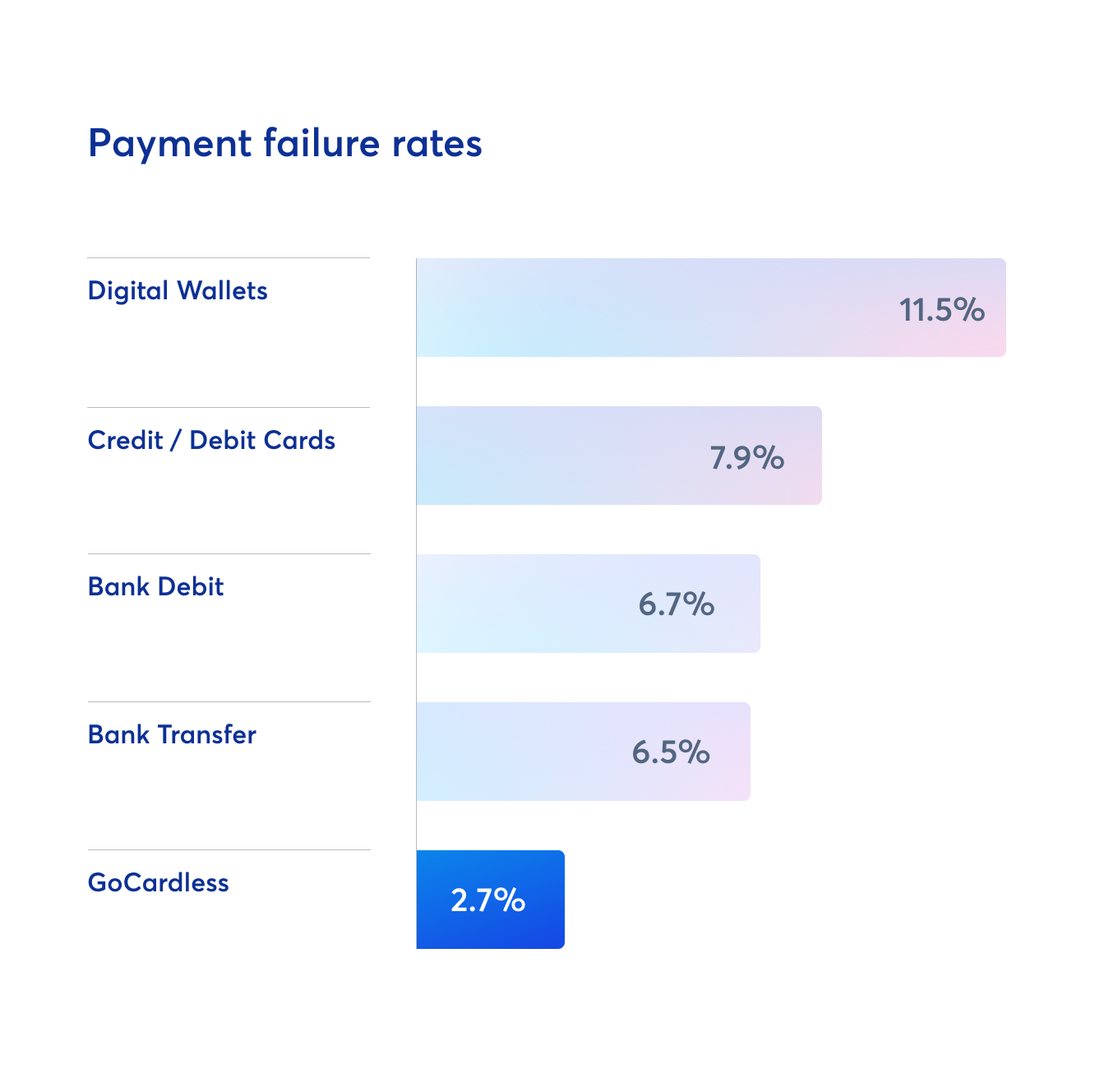
The 8 dimensions of payments: Success
Last editedJun 20223 min. read
In a world where it’s harder than ever to attract and retain customers, you don’t want something like payment failure to disrupt that relationship.
We’ve all experienced payment failures as a consumer in one way or another. Our gin subscription or streaming service lapses, not because we’re unhappy with the service, but because our card has failed or expired. It’s frustrating as a customer, and it’s even more frustrating for businesses.
Businesses with even fairly low payment failure rates could stand to lose millions in revenue every year, however many just accept it as part and parcel of the payment collection experience. The thing is, payment failure is actually very simple to control by properly considering your payments process.
Collecting payments successfully is just one of the 8 key elements that make up a fully optimised payment strategy. Throughout our experience optimising payments over the last 10 years, we’ve developed the 8 payment dimensions. This is a framework that provides a simple way for businesses to assess their payment strategy and find out where they can be making efficiencies.
What is payment success?
Payment success is relatively simple. It essentially means the number of payments that have been successfully collected and retained.
On the other side of the payment coin is failure. This is when you’ve tried to collect a payment and it fails. It is calculated as the number of uncollected payments divided by the number of attempted collections.
Use our calculator to work out how much payment failures are costing your business and how you can make significant savings.
Payments can fail for a number of reasons, some of which can be easily avoided. We’re going to look at that later on in the guide. First, we’re going to assess why payment failure should be a core business metric.
Why is payment success important?
On the surface, it just looks like a payment has failed that then needs recollecting to restore revenue you’re owed. Below the surface there is much more at play. We like to call it the iceberg effect.
Not being able to collect payments on the first try is costing you money, it’s costing your team time spent chasing those payments and it can ultimately lead to the churn of customers who actually still want to keep using your products and services.
What this all amounts to is the potential for businesses, even with relatively low failure rates, to lose up to $1.2 million in revenue every year.
When you dig a little deeper into the reasons why payments fail, it’s clear that losses such as these can be easily avoided. Let’s look at some of the simple steps businesses can take to mitigate payment failure.
How can I stop payments from failing?
Payment method
Choosing the right payment method not only impacts how many customers actually complete the checkout process, it also impacts how many payments are collected successfully. Some payment methods have significantly higher failure rates than others.

As you can see here, a reliance on cards or digital wallets could more than double the amount of payments that fail and in turn the revenue lost.
What can you do about it?
Consider adding an account to account payment method such as Direct Debit to your payment mix.
Account to account payment solutions, like GoCardless, move money directly from one account to another without the need for additional intermediaries or payment instruments, such as cards. As such, they carry the lowest failure rates. Direct Debit with GoCardless has a failure rate of just 2.7%.
Find out more about how GoCardless can help you to reduce your payment failure.
Recollection method
When a payment has failed, being smart about how you recover that payment can do a lot to minimise its impact on your business. If you’re recollecting your payments manually, that can cost you time and money spent chasing payers.
GoCardless research found that manual retries are only successful 38% of the time. That means that a large majority of payments still go uncollected.
What’s more, if that recollection is unsuccessful, it can ultimately lead to your customers churning. According to Forrester, 11-15% of failed payments can result in churn. If your business is operating a usage based model, that churn can then turn into bad debt.
What can you do about it?
Businesses need to be intelligent about the way they try to re-collect payments that fail after the first attempt and do as much as they can to automate that process.
Intelligent payment recovery services that use machine learning, like Success+ from GoCardless, looks at payments intelligence data, to select the day when there’s the highest chance of success of recollecting a payment.
Customers using this service have been able to recover 70% of failed payments. Customers experienced 64% reduction in time collecting payments and 70% of businesses said Success+ improved their relationship with customers.
Every payment that doesn’t require chasing down is time given back to bringing in new investment and scaling your business.
There are plenty more practical things businesses can do to influence the success of collecting payments. Below are some guides on how you can meet payer preference and optimise your payment page for better customer conversion.
GoCardless can help you maximise your payment success
GoCardless’ unique solution can reduce your payment failure rate to as low as 2.7%.
With the addition of Success+ with GoCardless, which intelligently retries failed payments using machine learning, you can recover, on average, 70% of failed payments, driving the margin of failure down even further.
“GoCardless account-to-account payments are more cost-effective and reliable than cards, which are expensive to process and prone to fail,” said Elise Nunn, Plum’s Head of Operations. After implementing Success+, “the impact was immediate - we’ve seen payment failures drop from 3.6% to 0.48% in three months.”
Do you want to find out more about how you can dramatically reduce payment failure?
